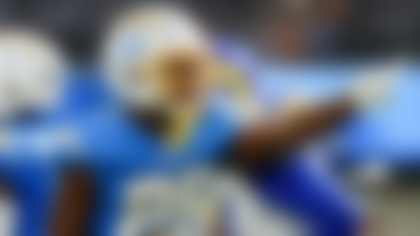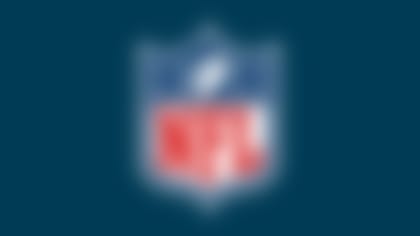The 2011 NFL Draft possesses a very good pool of talent at defensive end. There's a chance that eight defensive ends will be selected in the first round.
However, with half the league in a 3-4 defense and the other half in a 4-3, teams are looking for different types of ends to play in their schemes. The 3-4 teams want a tall, long-armed athlete who is stout enough to hold the line of scrimmage at the off-tackle run lane. The 4-3 teams are looking for more speed to get up field and will sacrifice some size for quickness.
This draft has a few candidates who can play well in either scheme, such as Wisconsin's J.J. Watt and California's Cameron Jordan. The 3-4 teams will also look in the defensive tackle population for players who might be able to play its scheme. Players such as Purdue's Ryan Kerrigan and Missouri's Aldon Smith might be viewed as defensive ends by 4-3 teams and as outside linebackers by 3-4 teams. Many players have told me they have been getting private workouts by teams in both schemes and being asked to do much different things depending upon which team is running the workout.
Player with most upside
Aldon Smith is only 21 years old and could have played two more college seasons but elected to enter this draft. He had a leg injury last season that restricted him to just 10 games, and Smith comes to the NFL with 23 games under his belt. Some say he needs to still develop physically and really needs to improve his lower-body strength.
Smith told me in an interview that he can already full squat 700 pounds, which is plenty strong for a long-legged 6-foot-4, 263-pound kid. He is athletic enough to stand up as an outside linebacker and strong enough to put his hand on the ground and play the run. In 23 games, Smith had 46 plays made behind the line of scrimmage. If he had stayed at Missouri, Smith probably would have finished his college career with more than 40 sacks and 100 tackles made behind the line of scrimmage. Smith's frame has room for another 25 pounds, and by the time he's 25 years old he could be playing at 285 and still running under 4.8 seconds in the 40-yard dash.
Biggest boom-or-bust prospect
Da'Quan Bowers entered this draft process back in January as a top-five candidate, but his knee injury has dropped him down some draft boards. He has a red flag for medical reasons and might not be considered a draftable player by some teams. There is some speculation Bowers might need microfracture surgery at some point. He had 15.5 sacks last season at Clemson and led the nation in getting to the QB.
Some would say he's worth a top pick and has the traits to be a premier pass rusher; others say he's a one-year wonder. A former Packers GM recently said to me, "If you're looking for a reason not to draft a guy you can find it." I think we are in an era when smart medical staffs know when to take a medical risk, and that creates a medical competitive advantage. Bowers is probably worth the risk; he's only 21 years old.
My favorite sleeper
Arizona's Brooks Reed was a tweener DE/OLB who I had a chance to watch at the Senior Bowl, and his motor was exceptional on the practice field. He ran a 4.68 40 at 263 pounds at the NFL Scouting Combine, and after the big first-round rush for defensive ends he will be a good value in the second or third round. He not only looks like Clay Matthews with the long hair, but he has a similar playing style.
Players with most to prove
Adrian Clayborn might have been a top-15 pick if he came out in 2010 off a 12-sack season and 20 more plays behind the line of scrimmage. He decided to go back to play another season at Iowa, and he didn't have the statistical season he hoped for, recording just 3.5 sacks. Is he the 2009 player who dominates, or the 2010 player who didn't dominate? I watched the Wisconsin game and was concerned whether he can beat an offensive tackle on a regular basis. He has short arms and is only 6-foot-2 ½, which could work against him.
Most versatile player
We're looking for a player who can play in either the 3-4 or 4-3 scheme, the quickness to penetrate, the bulk to two-gap, the speed to rush the passer, and the power to collapse the pocket. Does he exist in this draft?
There are a few candidates, but California's Cameron Jordan is the whole package. He is the son of former NFL tight end Steve Jordan and at 6-foot-4 and 287 pounds is a prospect for every defense. He is a 4-3 left defensive end, and he can move inside over a guard in pass downs, has long arms to two-gap in a 3-4 and ran 4.73 in the 40, which was faster than the 40 Michigan State's middle linebacker, Greg Jones, ran at the combine.
Debunking a myth
Just because this draft class is well stocked with first-round talent and there could be eight men drafted in the round, doesn't mean we will see more than three to four sacks per guy in their rookie season. In fact, I would consider it a good rookie year if they did average three to four sacks apiece. My radio partner, Tim Ryan, came out of USC with 20 sacks his senior year and recorded no sacks in his rookie season. NFL offensive tackles are much more athletic than the guys these defensive ends are used to rushing against in college.
Teams with the greatest need
Teams true to their draft board are going to be taking defensive ends, even if they already have solid pass rushers. For example, the Rams got good production from Chris Long and James Hall, but might be very intrigued by a guy like Kerrigan.



